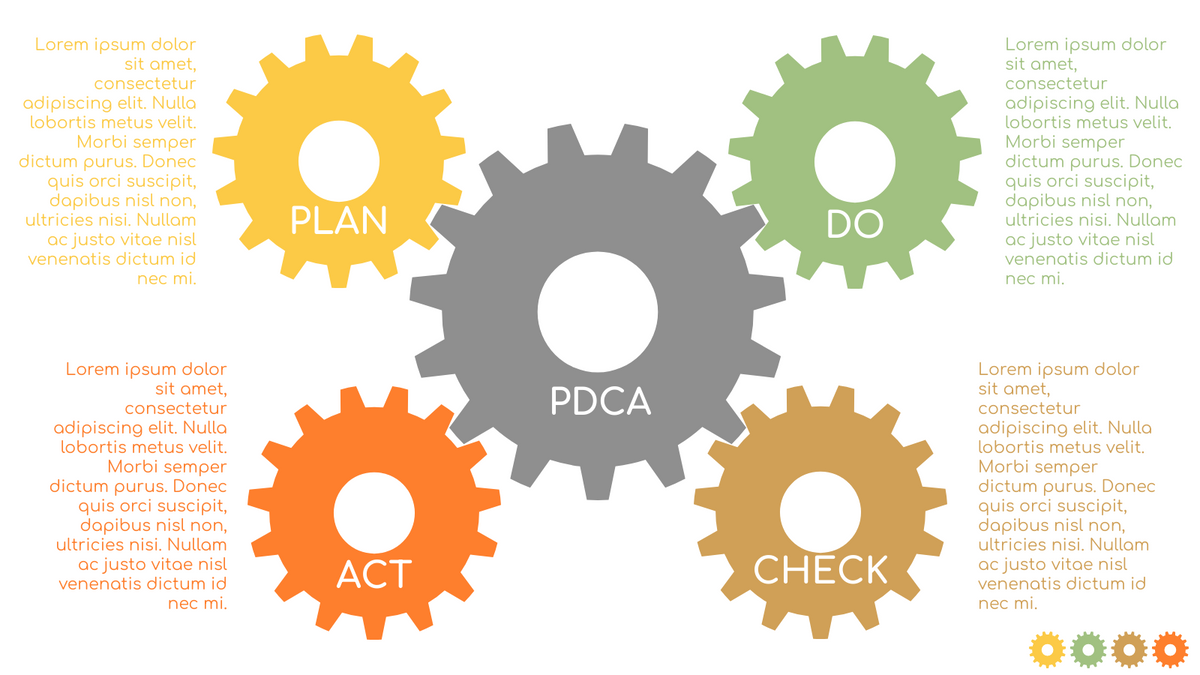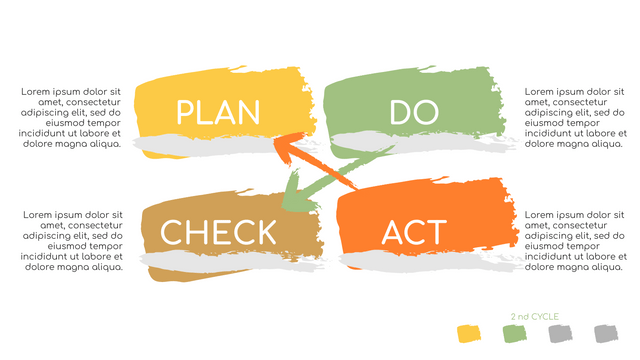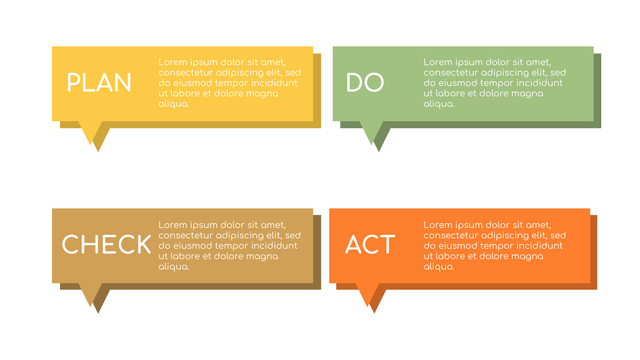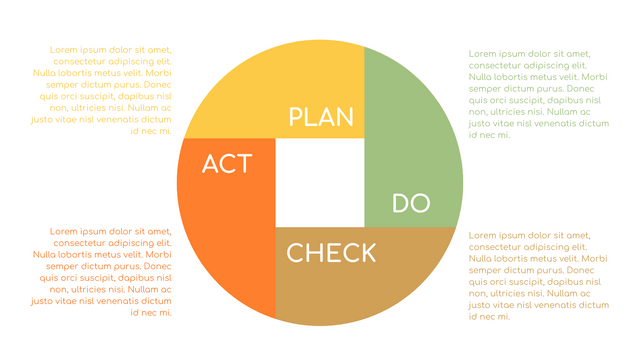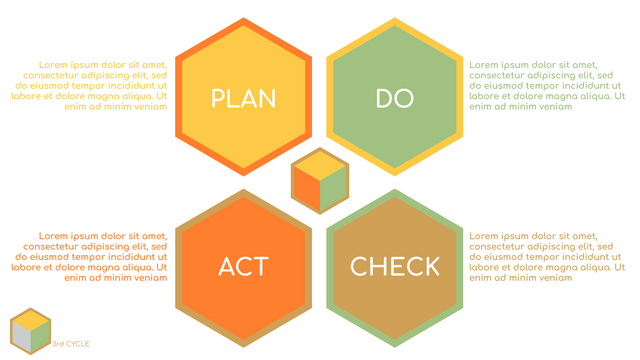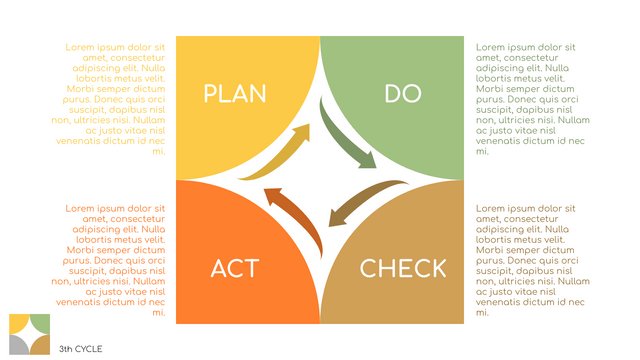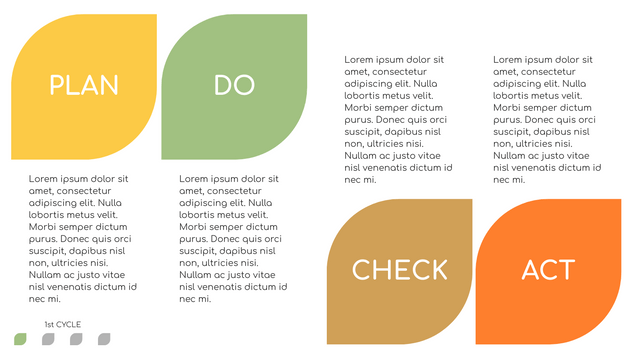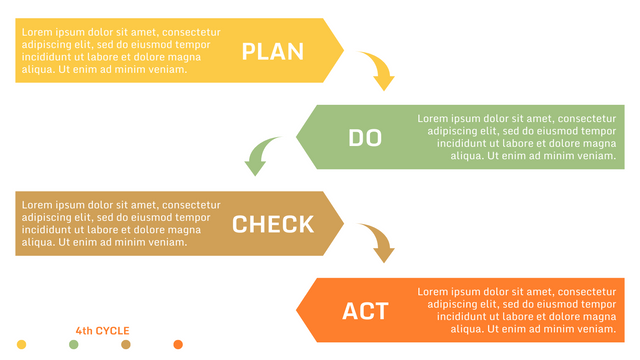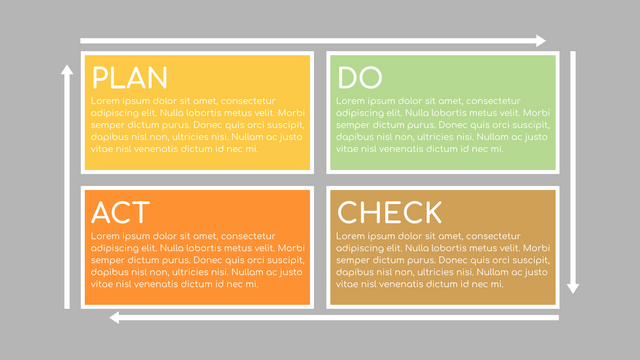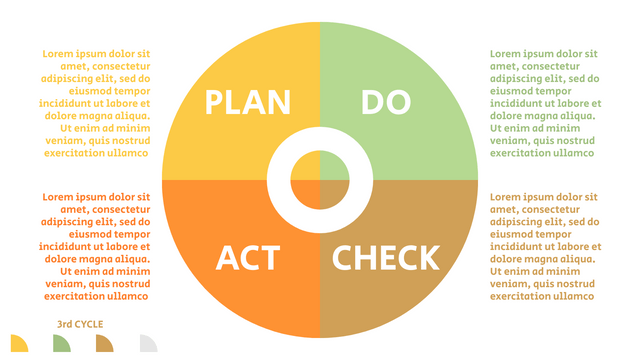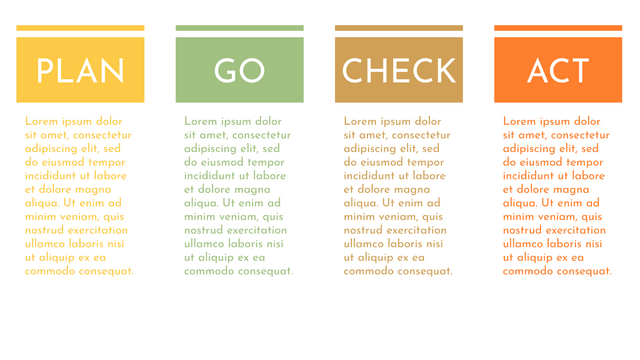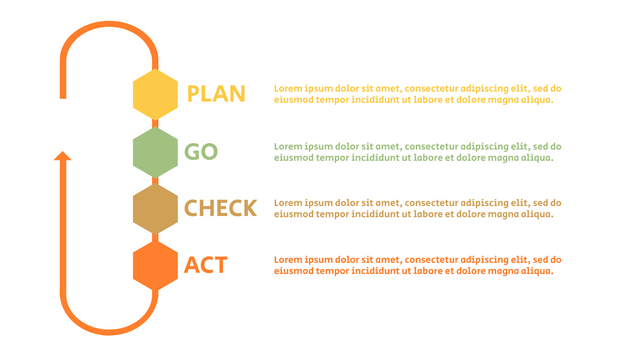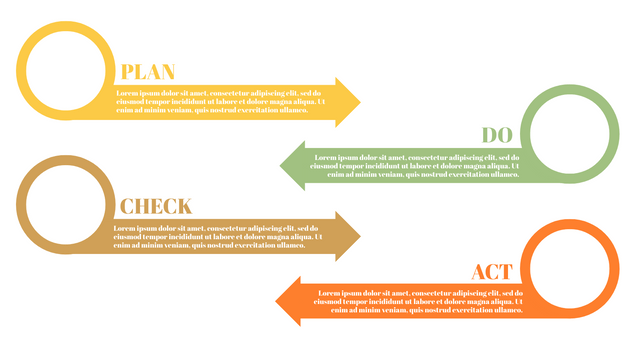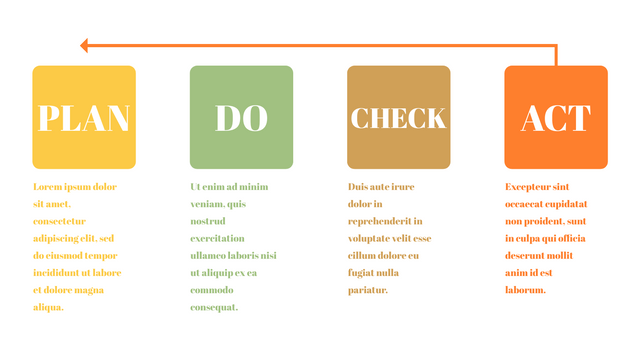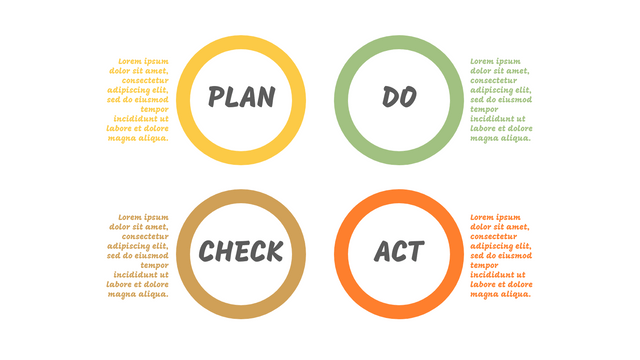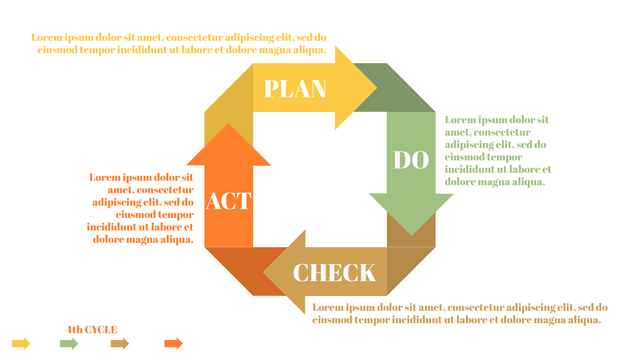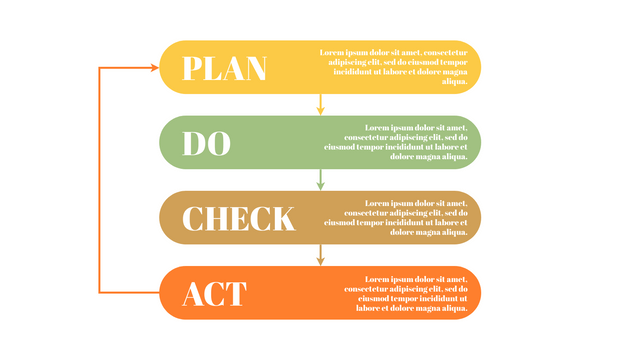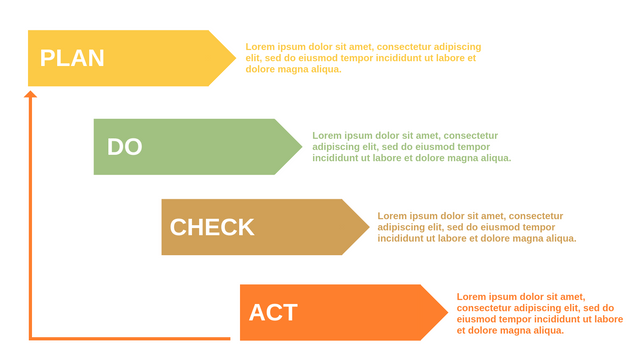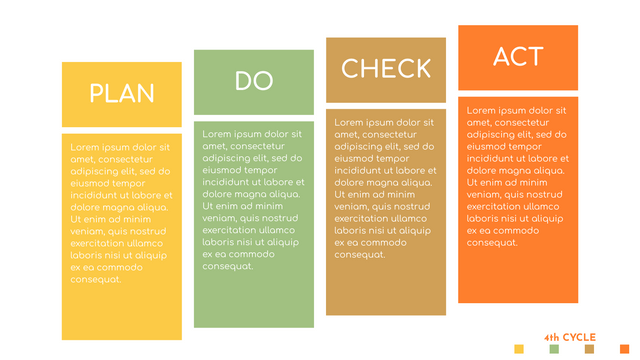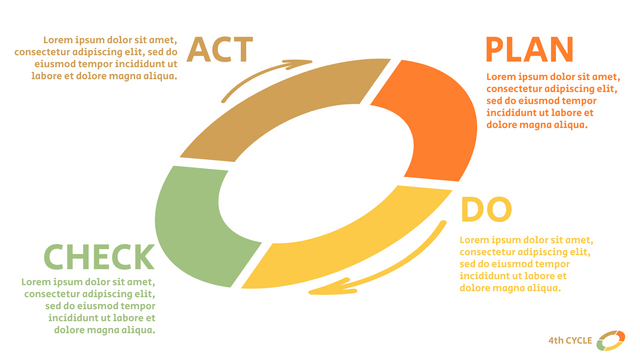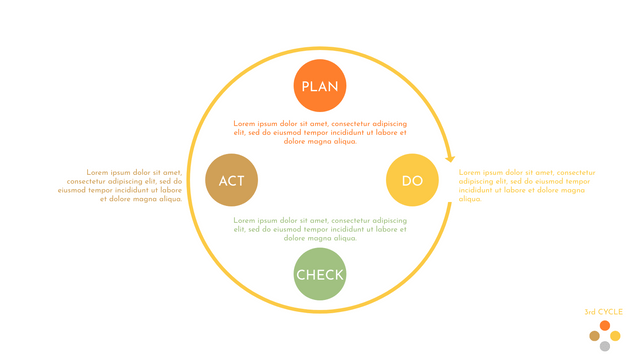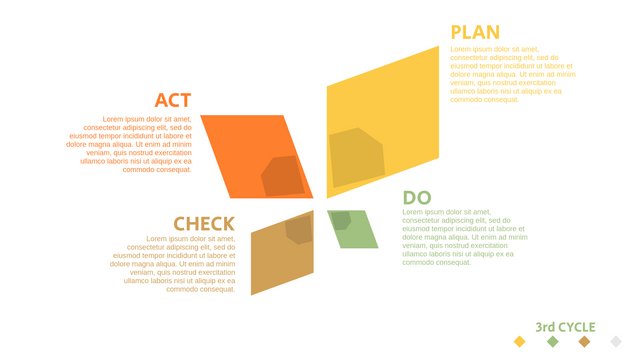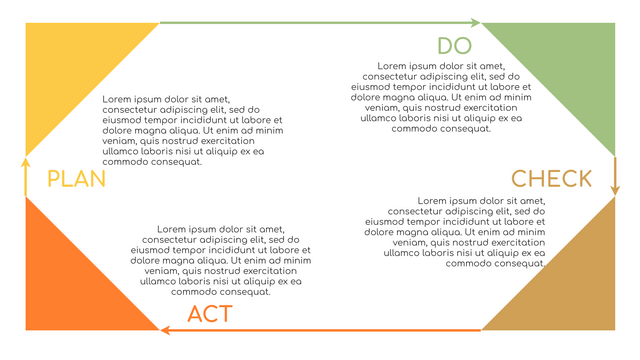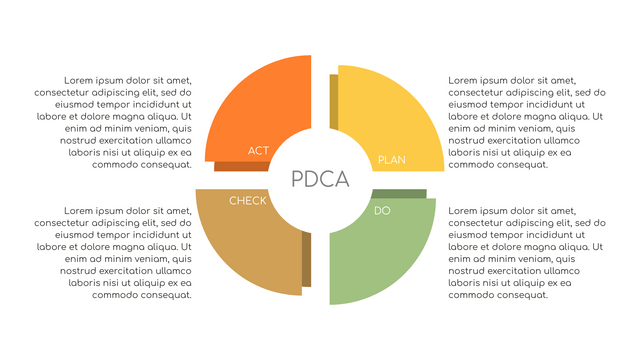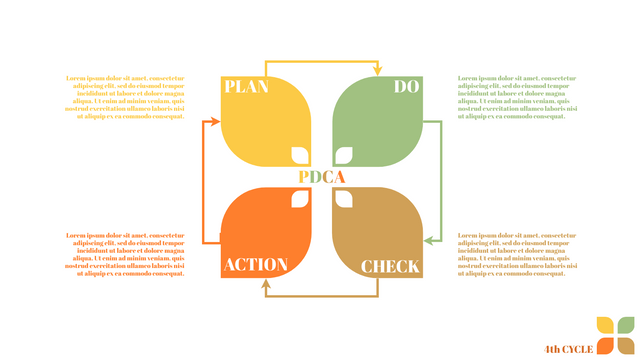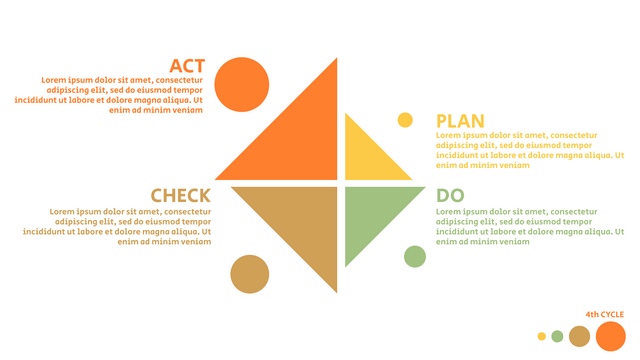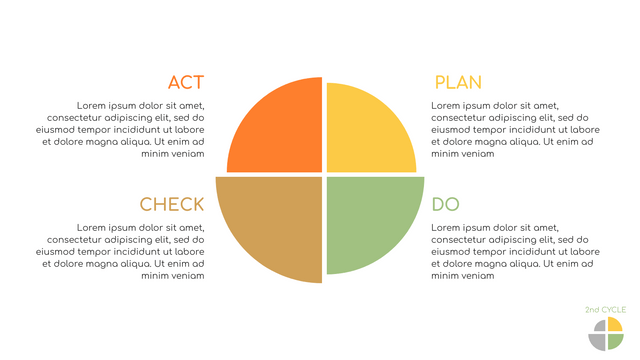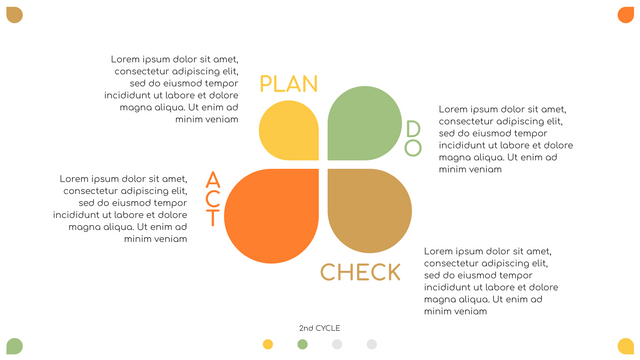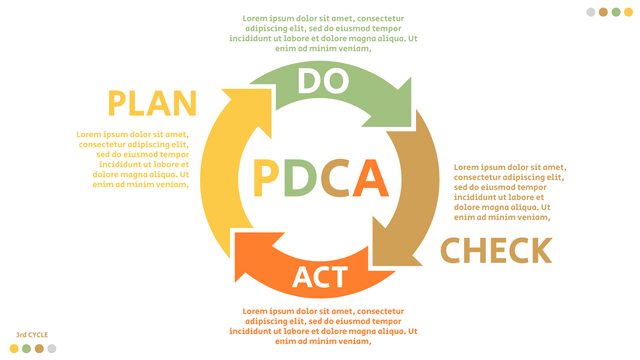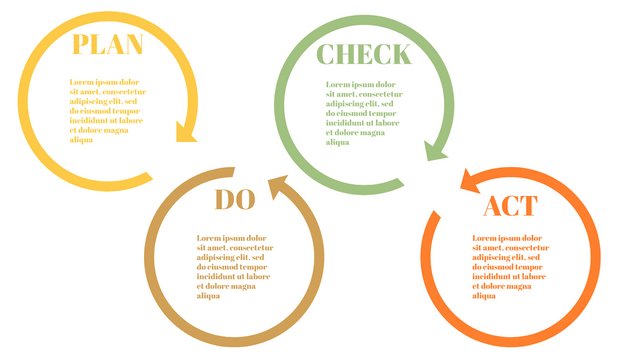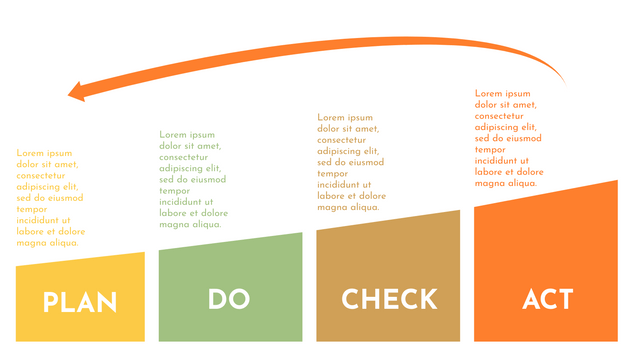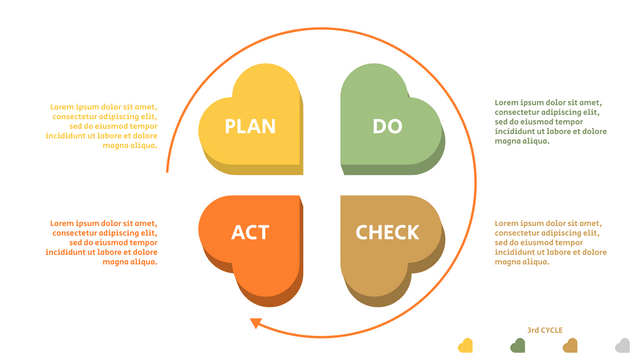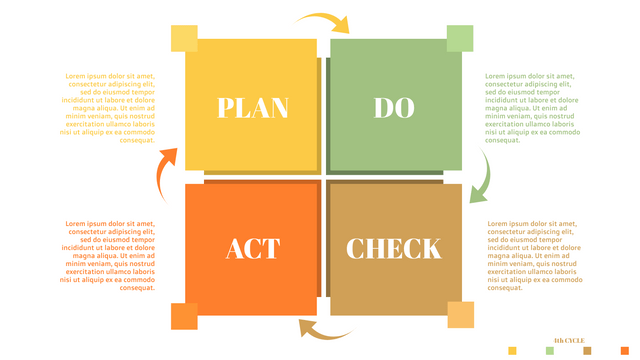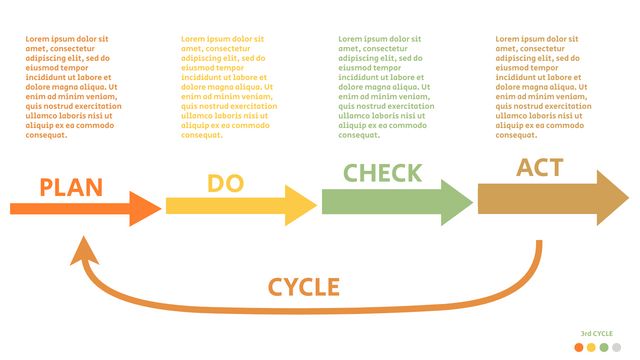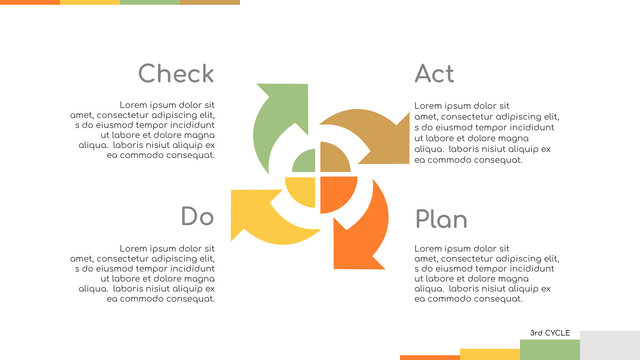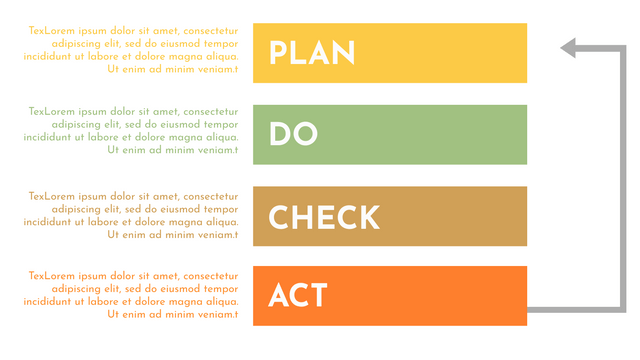W. Edwards Deming suggested in the 1950s that business processes should be analyzed and measured to determine the source of problems that cause products to deviate from customer needs. He recommends placing the business process in a continuous checking/ feedback loop so that managers can identify and change what needs to be improved in the process. As a professor, Deming created an simple visual model to illustrate this continuous process, often referred to as the PDCA cycle of planning, doing, checking, and acting. It is often called Deming Circle, Shewhart cycle, Deming cycle or Deming wheel control circle.
What is Deming Cycle?
The Deming cycle is made up of four cycle steps, so once the last stage is complete, we have to start with the first and repeat the cycle again. When this is done in the company, the activity is periodically re-evaluated to incorporate new enhancements. The application of this method is primarily for companies and organizations, but you can use it in any other situation as well.
This is an iterative four step problem solving process, which is widely used in business process improvement. Daming's PDCA cycle can be described below:
Plan (Planning): Design or modify business process components to improve results
Do (Execution): Execute the plan and measure its performance
Check (validate): Evaluate the measurement results and report them to the decision maker
Act (Action): Implement change on a larger scale. Continue to monitor changes and iterate through repeated loops if necessary.
Some ISO standards address the concept of continuous improvement. For example, ISO9001 talks about continuous improvement of the quality management system, explicitly naming the PDCA cycle (Plan, Execute, Check and Action).
